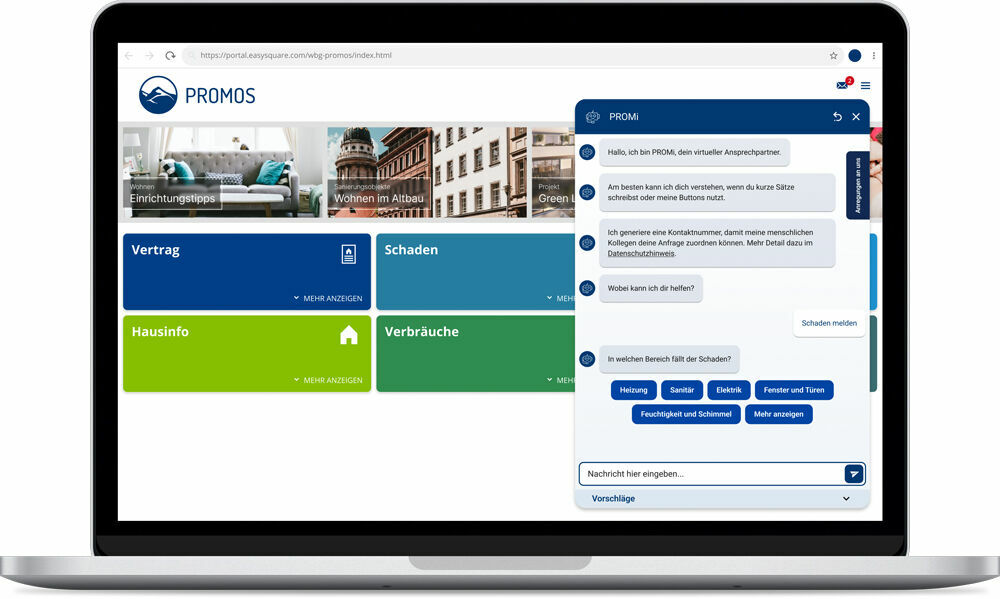Artificial intelligence – background information, usage tips and legal notes
According to Microsoft, AI refers to technologies that compliment and strengthen human abilities to see, hear, analyse, decide and act. This already implies that there must be not just ONE, but different types of AI. One sub-discipline of AI is machine learning (ML). Deep learning (DL) is, in turn, a sub-discipline of ML. The chatbot ChatGPT, for example, uses DL technologies.
How does AI based on DL work?
AI based on DL uses artificial neuronal networks to analyse large data records. In a similar way to the human brain, this works as follows: notice something, think about it and then draw conclusions. This allows AI models based on DL to examine much larger data volumes in a shorter time than humans can manage.
What is special about AI models like ChatGPT?
ChatGPT stands for Generative Pre-trained Transformer and it has the following characteristics:
- Pre-training: The model receives advance training with a large corpus of text data with the aim of developing an understanding of language structures and patterns.
- Fine-tuning: After the pre-training, the model is fine tuned for specific tasks or domains. This allows adjustment of the model for specific contexts or applications.
- Interaction: During interaction with users, ChatGPT reads the text that is entered and generates a response based on what it has learned during pre-training and fine-tuning.
- Contextual understanding: The model attempts to understand the context of the conversation in order to generate relevant and coherent responses.
- Generative: ChatGPT is generative, which means it doesn’t simply use predefined response patterns but generates creative and unique answers based on the user input and what it has learned.
- Adaptation to the user: Through continuous interaction, ChatGPT can adapt to the writing style and requirements of the user, allowing it to provide personalised and precise responses.
All off this embedded in a user-friendly interface combined with ease-of-use is what makes ChatGPT so special.
Prompting – using AI efficiently
Anyone who has asked the artificial intelligence behind ChatGPT a few questions will have quickly realised that the quality of the response greatly depends on a well-worded instruction. This act of specifically guiding artificial intelligence is known as prompting and is derived from behavioural therapy. But how does a prompt, or command, need to be worded to get the best result?
- Precise formulation: The more precisely a prompt is worded, the greater the likelihood that the AI will deliver the desired information. Information regarding backgrounds and target group as well as concretisation of the desired result are most effective.
- Variation: It is certainly not the case that there is a single perfect query to AI systems. In fact, the key to success lies in modifying and varying the question posed until it comes closer to the desired result.
- Templates: When queries are to be made on a regular basis, it can be helpful to create personal templates for prompts. This saves time and ensures that the responses remain at a constant level.
- Review: The possibilities of artificial intelligence are limited. It is important to understand these limitations and always review results to ensure their correctness.
Opportunities and risks of AI
As with many things in life, the use of AI also comes with risks. With regard to AI models such as ChatGPT, these include data protection and security risks. AI models are designed to process large data volumes. If personal data is also entered in an AI model, this poses a data protection risk that is difficult to calculate. Often, it is not clear where the data is stored and whether it can actually be deleted. For this reason, it is recommended to never enter personal data into AI models. AI models can also be susceptible to attacks – including hacking or manipulation of training data – which can result in malfunctions or malicious use. Finally, the output of AI models like ChatGPT should never be used without being reviewed first.
AI at PROMOS
As an IT service provider, at PROMOS we are also occupied with the topic of AI and consider how we can provide our customers with tailor-made solutions. We have already taken a first step by entering into a partnership with Bots4You GmbH, a company specialising in AI-supported communication solutions, in order to offer our real estate customers access to the most advanced applications in the AI field. The first few customers have already started using PROMi – the chatbot integrated into our easysquare cloud.
Source:
1. http://jmc.stanford.edu/articles/dartmouth/dartmouth.pdf

The virtual assistant PROMi supports users in answering standard questions.
You may also be interested in:

